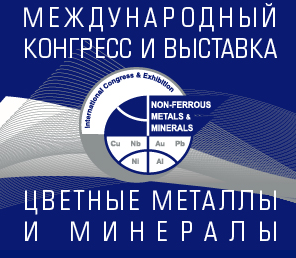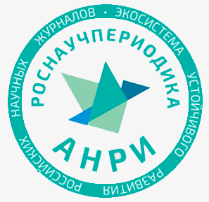ОЦЕНКА УРОВНЯ ЗАГРЯЗНЕНИЯ ПОЧВ Г. ИВАНОВО ПОЛИЦИКЛИЧЕСКИМИ АРОМАТИЧЕСКИМИ УГЛЕВОДОРОДАМИ
Аннотация
В работе приводятся результаты исследования уровня загрязнения почвенного покрова г. Иванова полициклическими ароматическими углеводородами (ПАУ). В пробах почв было идентифицировано 13 из 16 ПАУ, рекомендованных к контролю Агентством по охране окружающей среды США. Из приоритетного перечня в почвенном покрове города отсутствовали ацетонафтилен, ацетонафтен и индено(1,2,3-cd)пирен. Суммарная концентрация ПАУ в почвенном покрове изменяется в диапазоне от 869 до 23343 мкг/кг, при медианном значении 6805 мкг/кг. Анализ распределения концентраций ПАУ относительно их молекулярной массы показал, что основной вклад в суммарное содержание вносят ПАУ с низкой молекулярной массой, вклад которых составляет ~ 80 %. Установлено, что источниками поступления флуорена, хризена, бенз(а)антрацена, бенз(а)пирена и дибенз(a,h)антрацен, могут быть как локальные, так и трансграничные. Показано, что среднее суммарное содержания ПАУ в почвах города в 50 раз выше фонового уровня, поэтому основным каналом их поступления являются все же локальные источники выброса. Выявлено, что вклад канцерогенных ПАУ в их суммарное содержание не превышает 12 %, причем ~ 85 % приходится на бенз(b)флуорантен, а доля бенз(а)пирена не превышает 12,5 %. Проведена оценка величин индивидуального канцерогенного и неканцерогенного рисков для населения города, которая показала, что найденные величины соответствуют пренебрежимо малому индивидуальному риску. Уровень рисков канцерогенных эффектов у населения, проявляющийся при загрязнении почвенного покрова ПАУ, соизмерим с величиной рисков здоровью от загрязнения почвы тяжелыми металлами, а для неканцерогенных эффектов – на порядок ниже.
Литература
Ravindra K., Sokhi R., Van Grieken R. Atmospheric polycyclic aromatic hydrocarbons: source attribution, emission factors and regulation. Atmos. Environ. 2008. V. 42. N 13. P. 2895-2921. DOI: 10.1016/j.atmosenv.2007.12.010.
Samanta S.K., Singh O.V., Jain R.K. Polycyclic aromatic hydrocarbons: environmental pollution and bioremediation. Trends Biotechnol. 2002. V. 20. N 6. P. 243-248. DOI: 10.1016/S0167-7799(02)01943-1.
Morillo E., Romero A., Maqueda C., Madrid L., Ajmone-Marsan F., Grcman H., Davidson C., Hurst-house A., Villaverde J. Soil pollution by PAHs in urban soils: a comparison of three European cities. J. Environ. Monit. 2007. V. 9. N 9. P. 1001-1008. DOI: 10.1039/b705955h.
Zhang X., Tao S., Liu W., Yang Y., Zuo Q., Liu S. Source diagnostics of polycyclic aromatic hydrocarbons based on species ratios: a multimedia approach. Environ. Sci. Technol. 2005. V. 39. N 23. P. 9109-9114. DOI: 10.1021/es0513741.
Baker J.E., Eisenreich S.J. Concentrations and fluxes of polycyclic aromatic hydrocarbons and polychlorinated biphenyls across the air-water interface of Lake Superior. Environ. Sci. Technol. 1990. V. 24. N 3. P. 342-352. DOI: 10.1021/es00073a009.
Hussain B.A., Westgate J.N., Hayward S.J., Shunthirasingham C., Brown T.N., Hung H., Lei Y.D., Wania F. Polycyclic aromatic hydrocarbons and polychlo-rinated biphenyls in soils and atmosphere of Western Canadian mountains: The role of source proximity, precipitation, forest cover and mountain cold-trapping. Atmos. Environ. 2018. V. 1. P. 100004. DOI: 10.1016/j.aeaoa.2018.100004.
Wild S.R., Jones K.C. Polynuclear aromatic hydrocarbons in the United Kingdom environment: a preliminary source inventory and budget. Environ. Pollut. 1995. V. 88. N 1. P. 91-108. DOI: 10.1016/0269-7491(95)91052-M.
Gushchin A.A., Izvekova T.V., Uyutkin V.A., Mashkin D.V. Assessment of ecological risk in soil pollution by oil products supply enterprises (on the example of Ivanovo). Bezopasn. Technosf. 2014. V. 3. N 1 (46). P. 32-38 (in Russian). DOI: 10.12737/2776.
Cachada A., Dias A.C., Reis A.P., Ferreira da Silva E., Pereira R., Duarte A.d.C., Patinha C. Multivariate Analysis for Assessing Sources, and Potential Risks of Polycyclic Aromatic Hydrocarbons in Lisbon Urban Soils. Minerals. 2019. V. 9. N 3. P. 139. DOI: 10.3390/min9030139.
Goovaerts P. Geostatistics for natural resources evaluation. Oxford University Press on Demand. 1997.
Zhang H., Wang J., Bao H., Li J., Wu F. Polycyclic Aromatic Hydrocarbons in Urban Soils of Zhengzhou City, China: Occurrence, Source and Human Health Evaluation. Bull. Environ. Contam. Toxicol. 2020. V. 105. P. 446-452. DOI: 10.1007/s00128-020-02982-y.
Izvekova T.V., Kobeleva N.A., Gushchin A.A., Gerasi-mova M.S., Grinevich V.I. Influence of benzo(a)pyrene on environmental quality and population health (by example of Ivanovo). ChemChemTech [Izv. Vyssh. Uchebn. Zaved. Khim. Khim. Tekhnol.]. 2018. V. 61. N 12. P. 144-152. DOI: 10.6060/ivkkt.20186112.5838.
Izvekova T.V., Kobeleva N.A., Gushchin A.A., Grinevich V.I., Rybkin V.V. Distribution of Policyclic aromatic hydrocarbons in a snow cover in the territory of Iva-novo city, Russia. Chemosphere. 2020. V. 242. P. 125150. DOI: 10.1016/j.chemosphere.2019.125150.
GOST 17.4.4.02-2017 Nature Conservation (SSOP). Soils. Methods of sampling and preparation of samples for chemical, bacteriological, helminthological analysis. M.: Standartin-form. 2018 (in Russian).
PND F 16.1: 2.2: 2.3: 3.62-09. Quantitative chemical analysis of soils. Methods for measuring mass fractions of polycyclic aromatic hydrocarbons in soils, bottom sediments, sewage sludge and production and consumption wastes by high performance liquid chromatography. Approved. Federal Center for Analysis and Assessment of Technogenic Impact, 18.06.2009. Moscow: 2009 (in Russian).
Tolosa I., De Mora S. J., Fowler S. W., Villeneuve J.-P., Bartocci J., Cattini C. Aliphatic and aromatic hydrocarbons in marine biota and coastal sediments from the Gulf and the Gulf of Oman. Mar. Pollut. Bull. 2005. V. 50. N 12. P. 1619-1633. DOI: 10.1016/j.marpolbul.2005.06.029.
Alsbou E., Zaitoun M. A., Alasoufi A. M., Al Shra’ah A. Concentration and Source Assessment of Polycyclic Aro-matic Hydrocarbons in the Street Soil of Ma’an City, Jordan. Arch. Environ. Contam. Toxicol. 2019. V. 77. N 4. P. 619-630. DOI: 10.1007/s00244-019-00665-2.
Maximum permissible concentration (MPC) and approximate permissible concentration (APC) of chemical substances in the soil. Hygienic standards. GN 2.1.7.2041-06, GN 2.1.7.2042-06. Collection. Moscow: Federal Center for Hy-giene and Epidemiology of Rospotrebnadzor. 2006 (in Russian).
R 2.1.10.1920-04. Guidelines for assessing the risk to public health when exposed to chemicals that pollute the environment. M.: Federal Center for State Sanitary and Epidemiological Supervision of the Ministry of Health of Russia. 2004. P. 143 (in Russian).
Levshina S. Distribution and characteristic of PAHs in snow of the urban and reserve areas of southern Far East Russia. Bull. Environ. Contam. Toxicol. 2019. V. 102. N 2. P. 160-167. DOI: 10.1007/s00128-018-02533-6.
Vodyanitskiy Yu. Natural and technogenic compounds of heavy metals in soils. Pochvovedenie. 2014. N 4. P. 420-420 (in Russian). DOI: 10.1134/S1064229314040103.



















